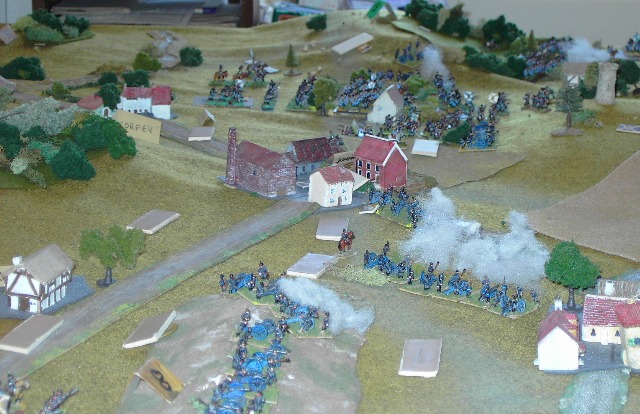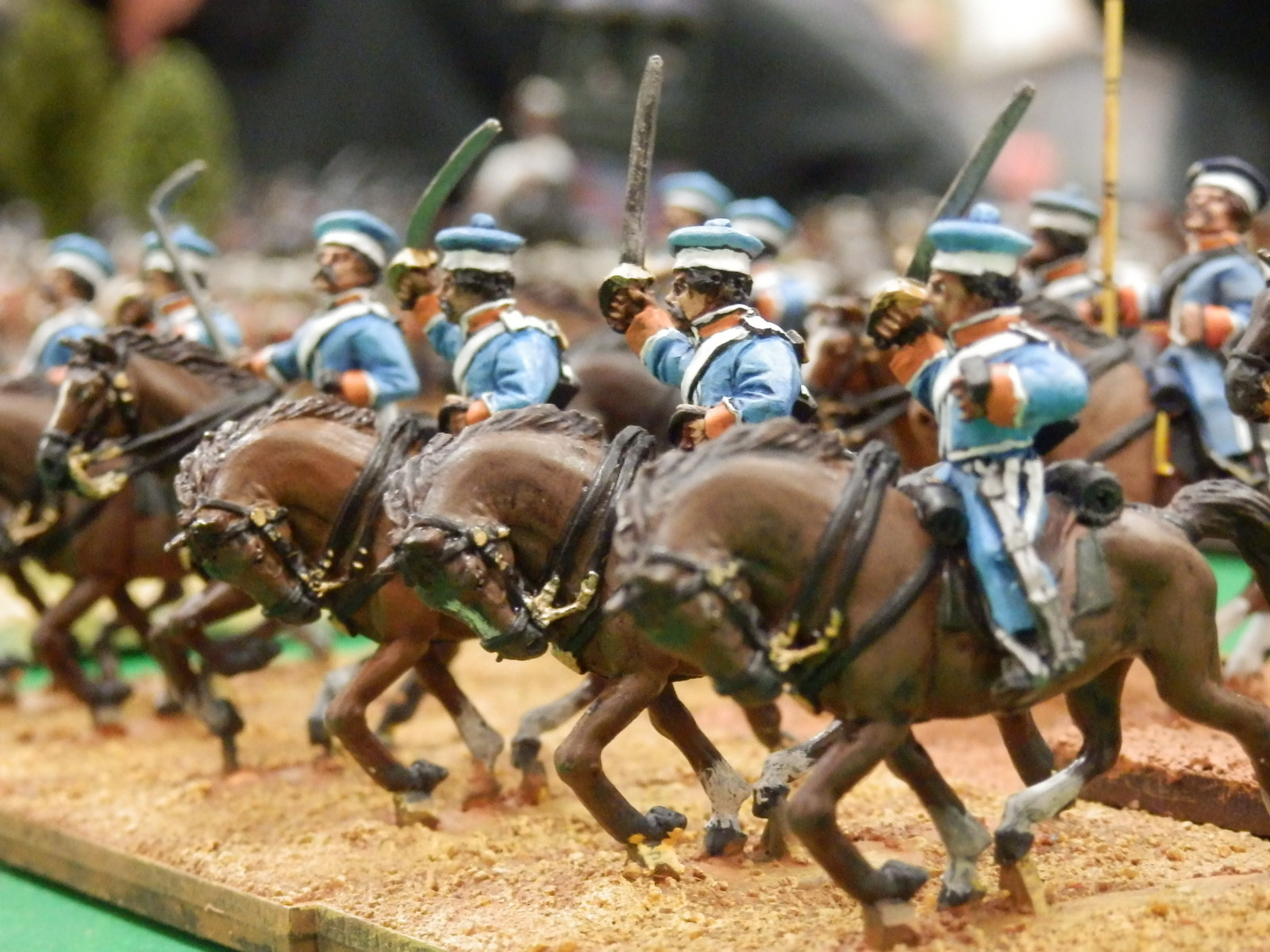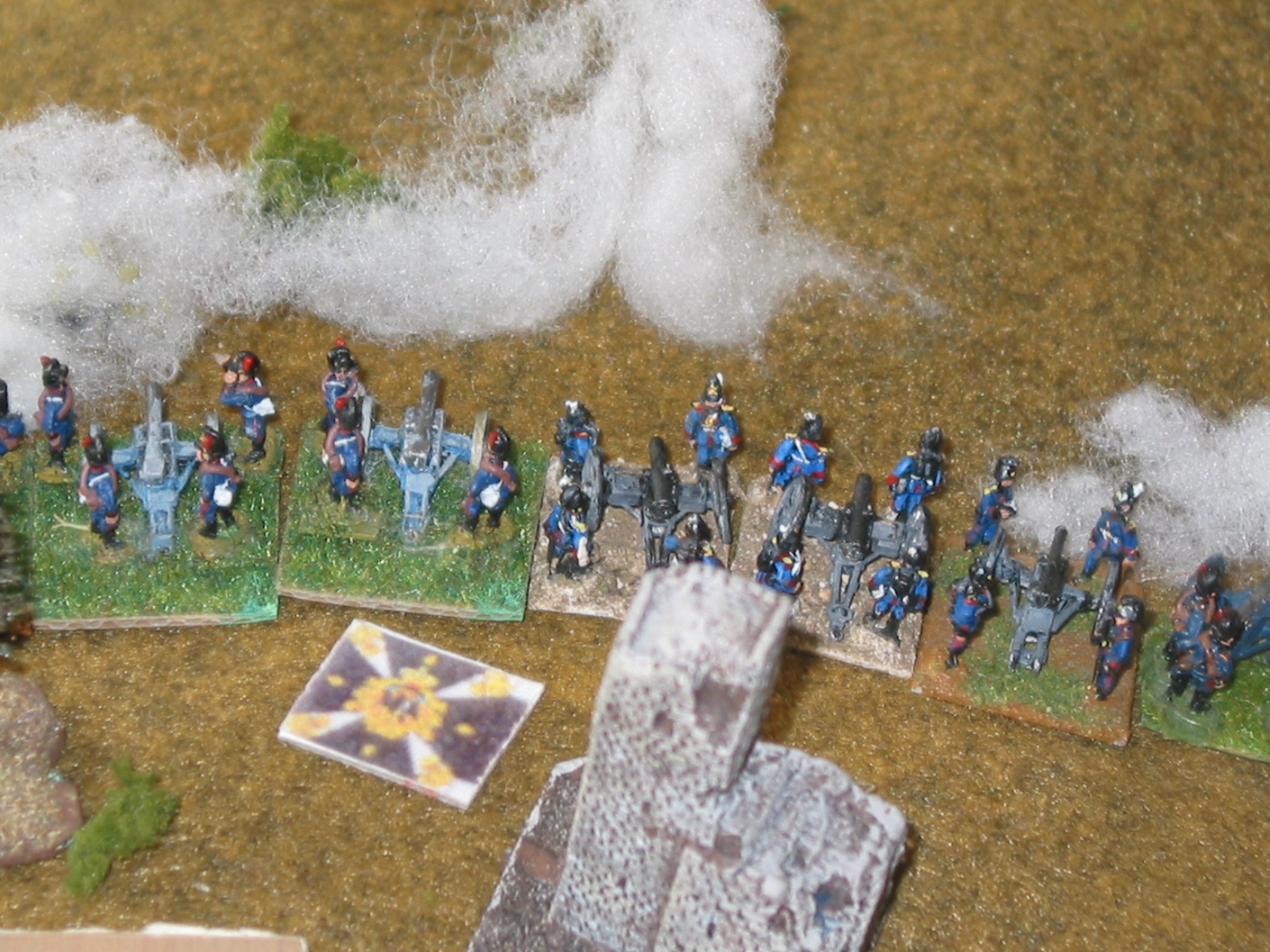DISTANCES/SCALES?
You could be sure I would not pass this one. It is obvious these rules were done for battalions scale units.
Players having with too few units but wanting to get out too many different toys for staying even remotely historical (those dreaded order of battles, History argh) pushed to have a unit being a sort of regiment of 1200. The author does tell you this is flexible and explains that it can work in different representation which is really fine. And it does. The only thing, he, and most other French players do not change the ground scale with changing the units scales! So, where the bn scale (6-700 men average 120 m front), is fine (except the horse see further), if kept the same, it become fantasy and a real trouble for 1200men. When your gun was firing at 1.2 km it now become an 1859 rifle shooting at 2 km. It means for example that if you want to play Waterloo, British batteries can nearly shoot everywhere from any part of the crest!
I also found out that for my troops which are at a higher scale (roughly 1 for 80-100) I'd have to get more figs, (Ok some) and that the cavalry would have too many units.
Skirmishers would go 80-150m away from their unit if not more and be shooting 100-150m further. Here integrated skirmishers shoot 3UD away 180m; too short add 1 UD.
The game ends up being slow; it does not have to. I found out that one reason is that we cannot move enough to close with the enemy. To close from extreme artillery range will take two-3 turns, at least one hour. To do a km!
This is because although one can do multiple moves, these have to stop at what he calls operational range 8Ud, 500m. If I change that to tactical range, 4UD, then multiple moves to close are possible. If it was done to give more chance to the artillery, it failed as the guns are quite feeble. A game turn has to be 1/2 hour as we have this grand tactical move of up to 5 column moves, 1800m for fast guys.
Command
It is a bit foggy as to how many commanders one needs to have the game move, the few examples on his site suggest 3-5 units per command. I also will always use historical command structure. It means divisions and brigades, as most brigades end up with 3 to 6 units each and one division general for 2-3 brigades. In the end it roughly fits his points averages. Corps commanders can also be there, over this, in big games. My aim is to play many of those appealing scenarios I have in Hopper's booklets.
I might use my order system for orders from corps to divisions.
Cavalry:
Mine are mostly based on 4 cm with 3 horsemen, not his 2 on 3cm. I understand his bases all being (same pb with artillery fi!) the same, simplify the life. My way is that history is the base, rules having to adapt, especially if it does not make for so much trouble. 300 horse on 2 ranks, have a longer front than 600 foot in line (c.f. Kriegspiel of Reischwitz 1828 for example!). At least 150m vs 110-120m; it does matter if you have quite a number of each in line and it looks better. Also there is no reason to under represent those beautiful horsemen, 1 foot for 50, one horse for 80?
I use small cavalry 2 steps, average 3, big 4.
I will probably normally play with basic infantry units being 7-800 men, big ones 1000-1200 and cavalry basic one around 400-450. Then the UD should be an inch. In case I can go to basic units (inf.) being 1000 then UD be 2 cm. If you do that it does not change the game and distances in historical scenarios are fine. It suits better my existing troops. Some battalions will have to be disappearing into bringing others to strength, not so good, but it will save time and avoid too big historical brigades which slows the game, their leaders having too few command points. Of course, batteries will stay of their real size. It is also a simple way to de facto slightly increase their effect.
All this said, I like the rules and so far after studying Grande Armée, Valour and fortitude, Lasalle2, this would be the one of choice for the smaller scenarios; moreover the other French gamers are playing this which might help getting one more, occasionally.


